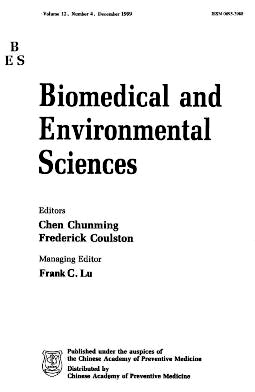Urban-Rural Comparison of Nutrient Intake by Adult Women in Shaanxi Province, China
-
Key words:
- Shaanxi Province /
- index determination /
- as a result of /
- energy intake
Abstract: Triplet surveys were conducted in the city of Xi' an and two villages (one in the vicinity and the other at a distance) in Shaanxi Province in China in October-November (when agricultural activitis were low), 1997, to elucidate nutrient intakes with a focus on possible urban-rural differences. Total food duplicate samples were collected from non-smoking and non-habitually drinking adult healthy women (about 50 subjects per site and 149 in total). The nutrient intakes were estimated from the weight of food items in reference to national food composition tables. On average, the women took 1873 kcal energy, 54 g protein and 37 g lipid per day, with a lipid energy ratio of18.4%. Both excess and insufficient energy intake was observed as a result of food intake analysis and body mass index determination. With regard to minor nutrient intakes, insufficiency was serious in the case of calcium, vitamin A and vitamin B2, but not with iron. Whereas dependency on plant foods for sources of energy and protein was common to the three regions, Xi' an people consumed more animal foods than those in the villages. Intake of fish and shellfish was quite low throughout the three regions. Among the four types of cereals, wheat was consumed most substantially in the three regions and in three meals (except for the village where people essentially did not take lunch in reflection of low agricultural activities), whereas rice was consumed more in Xi' an than in the two villages. Maize consumption was higher in the two villages (especially for breakfast) than in the city.In contrast, foxtail millet (although in small amounts) was taken primarily in Xi'an and only at the time of breakfast.
| Citation: | HARUO NAKATSUKA, ZHANG ZUo-WEN, QU JtANc-BIN, GAO WEI-PIN, DENG YI-JUAN, SHINICHIRO SHIMBO, TAKAO WATANABE, NAOKO INOGUCHI-MATSUDA, KAE HIGASHIKAWA, MASAYUKI IKEDA. Urban-Rural Comparison of Nutrient Intake by Adult Women in Shaanxi Province, China[J]. Biomedical and Environmental Sciences, 1999, 12(4): 270-284. |







 Quick Links
Quick Links
 DownLoad:
DownLoad: